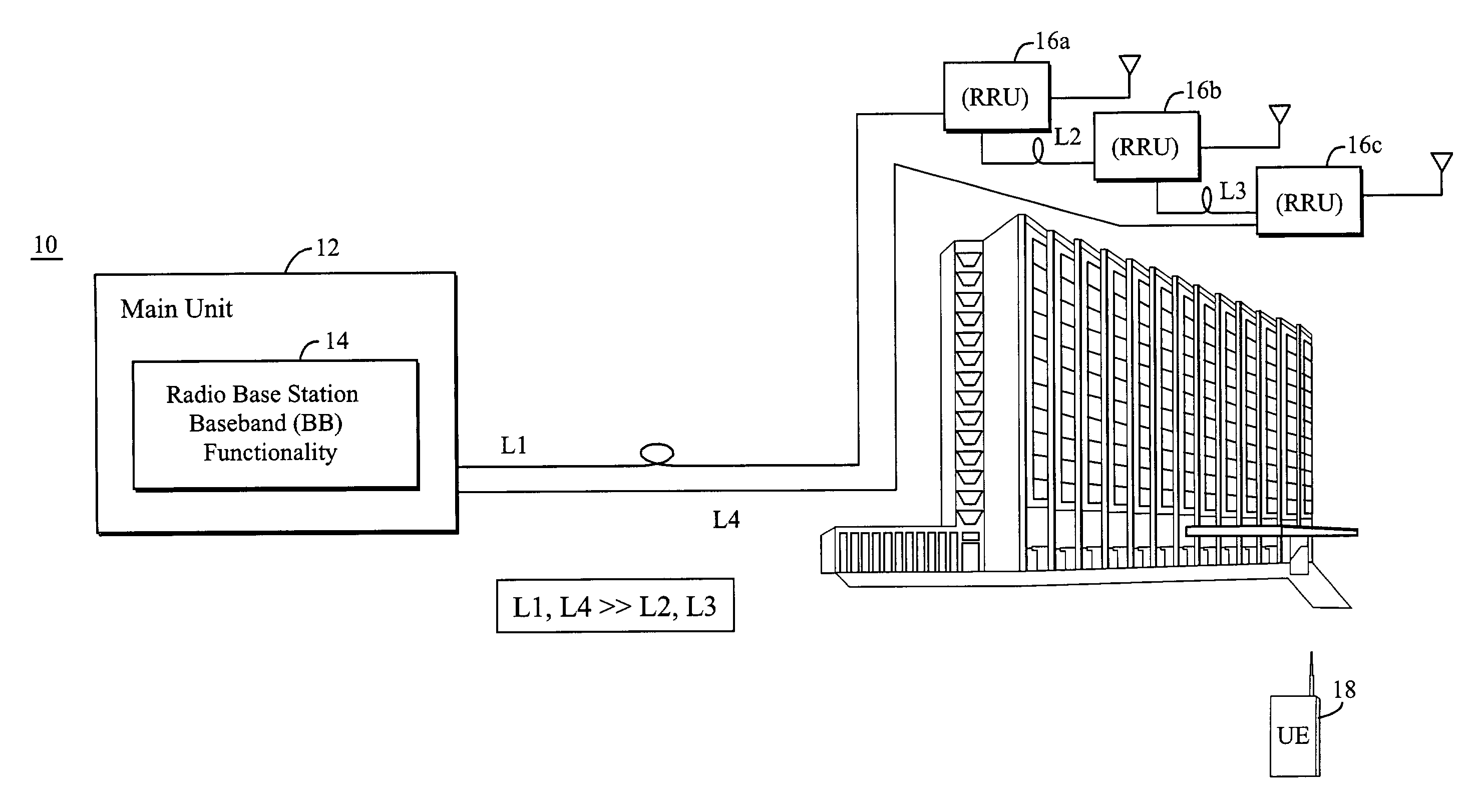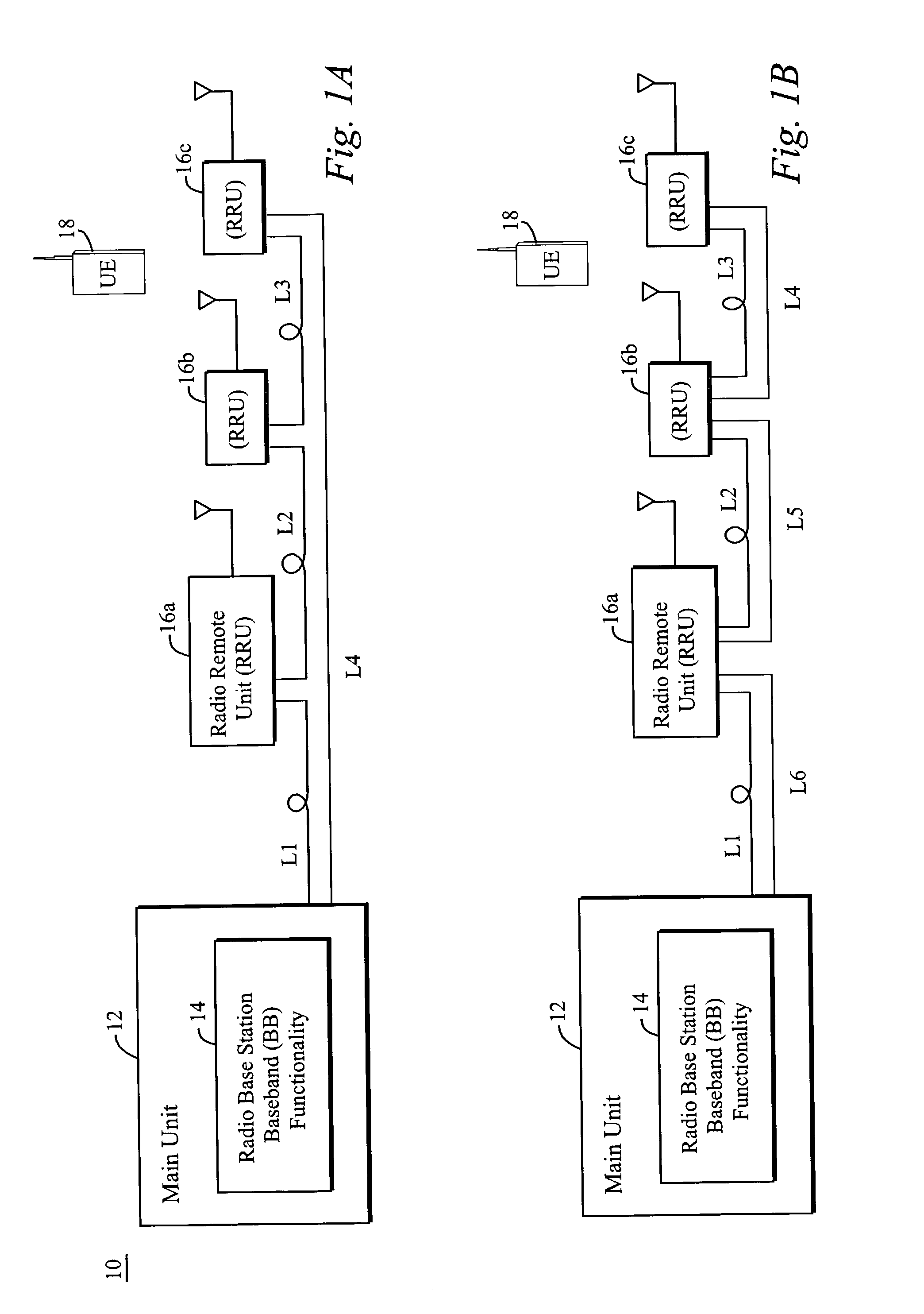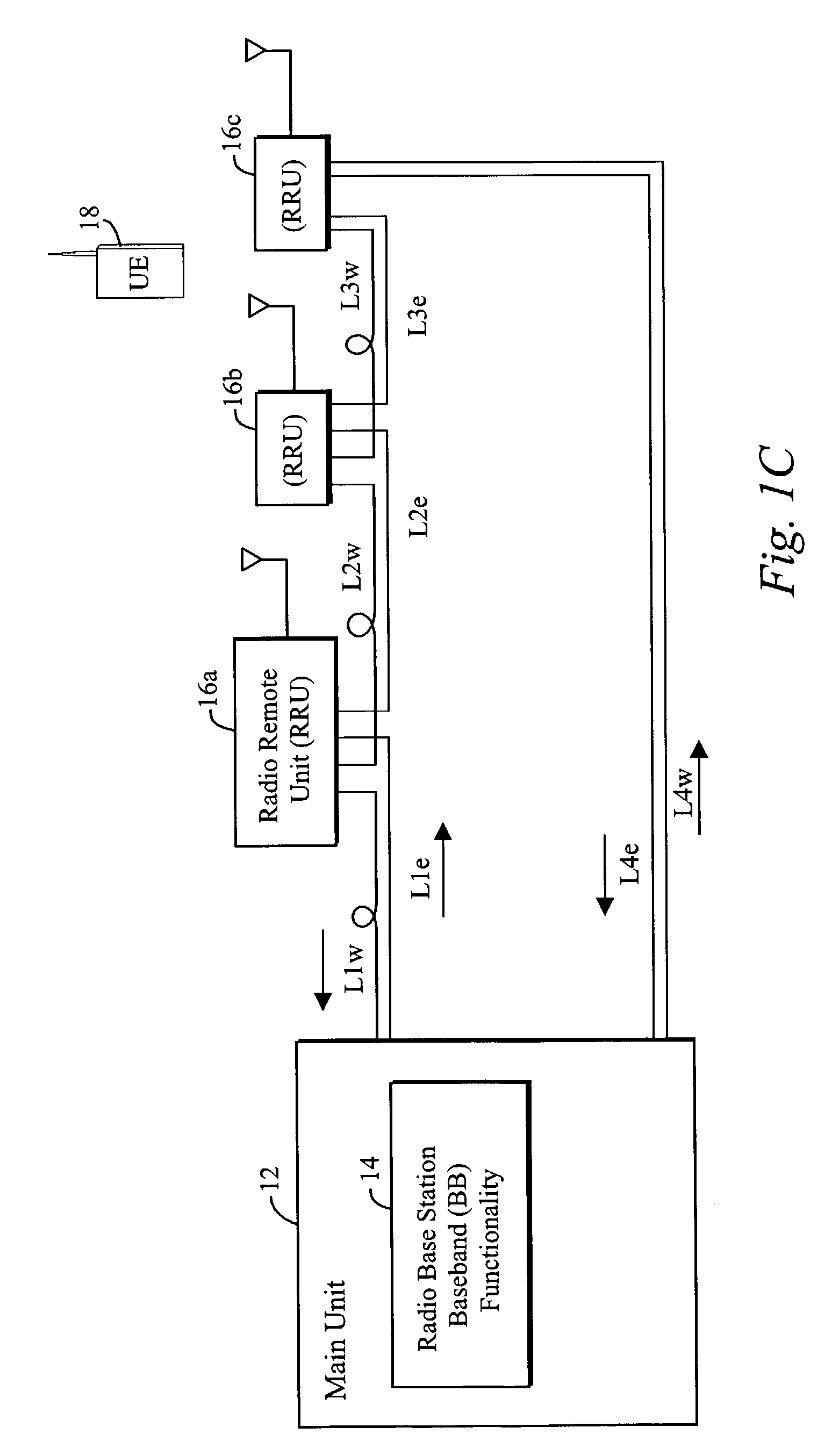Optical fiber coupling configurations for a main-remote radio base station and a hybrid radio base station
a technology of optical fiber and hybrid radio, applied in the field of radio communication, can solve the problems of different optical link delays, time/phase shift of signals, and delay that is not constant and may vary, so as to avoid the expense and drawbacks, eliminate the cost necessary, and avoid the effect of cost and cos
- Summary
- Abstract
- Description
- Claims
- Application Information
AI Technical Summary
Benefits of technology
Problems solved by technology
Method used
Image
Examples
Embodiment Construction
[0033]In the following description, for purposes of explanation and not limitation, specific details are set forth, such as particular embodiments, procedures, techniques, etc. in order to provide a thorough understanding of the present invention. However, it will be apparent to one skilled in the art that the present invention may be practiced in other embodiments that depart from these specific details. For example, while the present invention is described in an example application to a CDMA-based cellular system, the present invention may be used in any cellular system employing a main-remote radio base station architecture having any number of remote units configured in any network topology where plural RRUs can be coupled in an optical fiber loop. It may also be used in any cellular system employing a hybrid base station. Although some of the following examples employ a single fiber loop, the invention may also be used in coupling configurations that use plural fibers.
[0034]In ...
PUM
 Login to View More
Login to View More Abstract
Description
Claims
Application Information
 Login to View More
Login to View More - R&D
- Intellectual Property
- Life Sciences
- Materials
- Tech Scout
- Unparalleled Data Quality
- Higher Quality Content
- 60% Fewer Hallucinations
Browse by: Latest US Patents, China's latest patents, Technical Efficacy Thesaurus, Application Domain, Technology Topic, Popular Technical Reports.
© 2025 PatSnap. All rights reserved.Legal|Privacy policy|Modern Slavery Act Transparency Statement|Sitemap|About US| Contact US: help@patsnap.com



